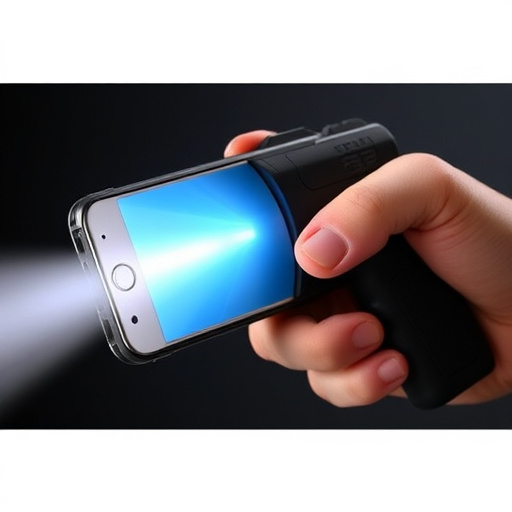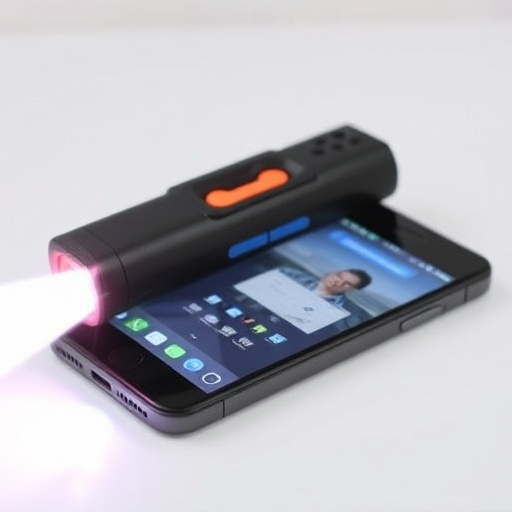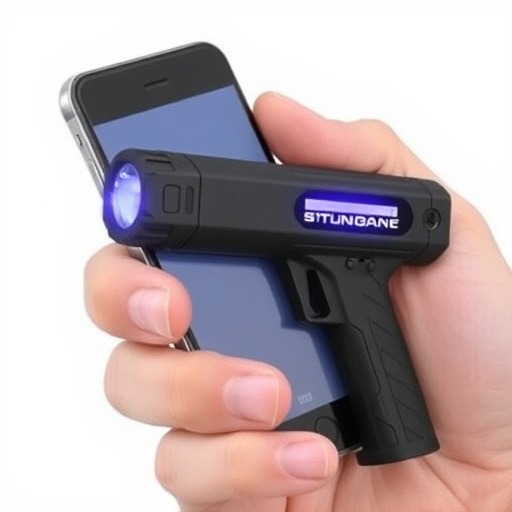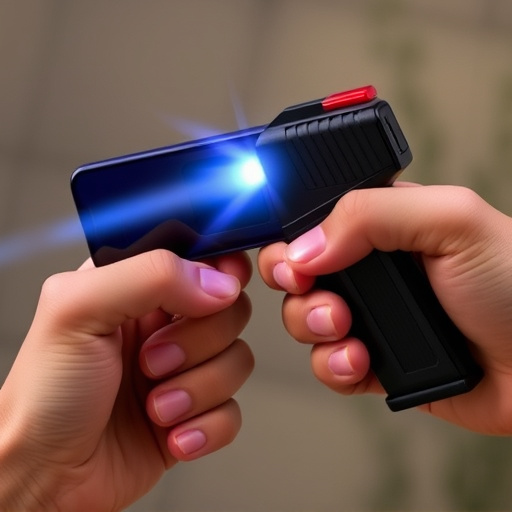Voltage significantly impacts clothing's protective effectiveness against electrical shocks, with fabric thickness and conductivity affecting how well it blocks current flow. Materials like cotton and wool are good insulators, while synthetic fibers conduct electricity more easily. For optimal personal safety, users of smart phone stun guns should look for devices designed to penetrate multiple layers of fabric, especially thinner ones (less than 1mm), and undergo proper training to understand the device's limitations and legal/ethical considerations in their jurisdiction.
Voltage penetration through thick clothing is a critical safety concern, especially with the rise in smart phone stun gun usage. This article delves into the science behind how voltage interacts with fabrics, exploring factors like material composition and thickness. We examine if and how stun guns can effectively deploy their charge through garments, and discuss safety measures, legal implications, and ethical considerations for responsible use. By understanding these dynamics, users can make informed decisions to ensure both personal safety and compliance with the law.
- Understanding Voltage and Its Effects on Clothing
- The Role of Material Composition in Electrical Conductivity
- How Thick Is Too Thick for a Smart Phone Stun Gun?
- Safety Measures When Using Stun Guns Through Clothing
- Legal Considerations and Ethical Implications
Understanding Voltage and Its Effects on Clothing

Voltage, a measure of electrical potential difference, plays a significant role in determining how well clothing can protect us from external shocks. When considering the impact of voltage on clothing, it’s essential to understand that different materials have varying levels of insulation. For instance, while smart phone stun guns operate within specific voltage ranges, their effectiveness against thick clothing is limited. The fabric’s thickness and conductivity act as barriers, reducing the penetration depth of the electrical charge.
Clothing acts as a protective layer by creating an insulating barrier between the body and external electrical sources. In the case of high-voltage incidents, such as those associated with stun guns, the clothing’s ability to block or conduct electricity becomes critical. Thick fabrics like denim or leather are designed to impede the flow of electric current, thereby minimizing the risk of electrocution. However, it’s important to note that while these materials offer some protection, they are not foolproof, especially against direct contact with high-voltage sources like stun guns.
The Role of Material Composition in Electrical Conductivity

The material composition plays a pivotal role in understanding how voltage penetrates through thick clothing, offering insights into the effectiveness of certain garments as barriers or conductors. When considering a Smart Phone Stun Gun’s impact, for instance, the electrical conductivity of fabrics becomes paramount. Materials like cotton and wool, typically worn daily, are insulators, meaning they do not conduct electricity efficiently, thus hindering the flow of voltage.
In contrast, synthetic fibers such as polyester or nylon possess higher conductivity due to their chemical structure. These materials can significantly alter the penetration depth of electrical current. This is particularly relevant when a stun gun is employed, as its high-voltage discharge may not effectively stun through thick layers of certain fabrics, underscoring the importance of material selection in personal safety equipment and law enforcement tools like Smart Phone Stun Guns.
How Thick Is Too Thick for a Smart Phone Stun Gun?

When considering the effectiveness of a smart phone stun gun, understanding the limitations of voltage penetration through clothing is key. While stun guns are designed to disrupt an attacker’s nervous system with a powerful electric shock, their ability to penetrate thick fabrics varies significantly. Generally, materials like denim, leather, and even some bulky jackets can impede the flow of electricity, reducing the weapon’s effectiveness.
For a smart phone stun gun to be truly effective, it needs to deliver a strong jolt capable of bypassing outer layers of clothing. As a rough guideline, fabrics that are less than 1 millimeter in thickness allow for better voltage penetration. Any thicker, and the chances of delivering a shock powerful enough to subdue an assailant diminishes considerably. This is why opting for a stun gun designed to penetrate through multiple layers of fabric is crucial for personal safety.
Safety Measures When Using Stun Guns Through Clothing

When considering the use of a stun gun through thick clothing, safety should always be the top priority. It’s important to note that the effectiveness of a stun gun can vary significantly depending on the material and thickness of the fabric. In terms of smart phone stun guns, which are designed for personal protection, they may not penetrate dense fabrics as reliably as traditional models. As previously mentioned, in today’s digital era, folks often rely on smart phones for self-defense, making these devices a convenient yet potentially limited option.
In light of this, users should exercise caution and be aware that the shock might not be delivered as intended. To ensure safety, it’s crucial to test the stun gun in controlled environments before relying on it in high-risk situations. Additionally, training in proper usage is essential, especially for individuals considering carrying a stun gun for personal protection. Remember that, while innovative tools like smart phone stun guns offer new possibilities, understanding their limitations and taking preventive measures are key to effective self-defense.
Legal Considerations and Ethical Implications

When considering the use of voltage penetration through thick clothing, especially with devices like a smart phone stun gun, it’s crucial to navigate a landscape fraught with legal considerations and ethical implications. Each jurisdiction has specific laws governing the possession and use of stun guns, and these regulations often prohibit or restrict their deployment in certain settings, such as schools, workplaces, and public gatherings. Non-compliance can lead to severe penalties, including fines and imprisonment.
Ethically, the use of such devices raises questions about personal safety versus public safety and privacy. While advocates argue that stun guns can deter criminal activity and empower individuals, critics contend that their misuse could result in unintended harm or even death. Moreover, the potential for these devices to be used against vulnerable populations, like children or people with medical conditions, necessitates a careful balance between personal protection and public responsibility.
In conclusion, while a smart phone stun gun presents unique challenges due to its electrical nature, understanding voltage penetration through thick clothing is crucial for both safety and legal considerations. The material composition of clothing plays a significant role in determining how well a stun gun can deliver its charge. As we’ve discussed, certain thicknesses pose a barrier, but with the right knowledge, users can ensure effective deployment while minimizing risks. Always remember to prioritize safety measures and stay informed about local laws governing such devices to avoid ethical dilemmas.
